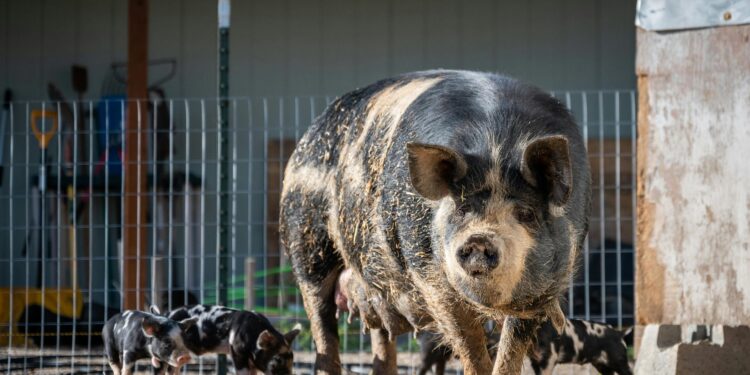Credits: Brett Sayles from Pexels
New research suggests that pigs may serve as a transmission vehicle for a strain of hepatitis E virus (HEV) common in rats that has recently been infecting humans.
The Rocahepevirus ratti strain is called “rat HEV” because rats are the main reservoir of the virus. Since the first human case was reported in a person with a weakened immune system in Hong Kong in 2018, at least 20 human cases in total have been reported, including in people with normal immune function.
People infected with rat HEV have not reported exposure to rats, leaving the cause of infection unclear. The presumed cause of other human HEV infections is, in many cases, the consumption of raw pork, making this also a potential route of transmission of rat HEV.
Researchers at Ohio State University have discovered that a strain of rat HEV isolated from humans can infect pigs and transmit between animals housed in farm-like conditions. Rats are common pests in pig barns, suggesting that the pork industry could be an environment in which rat HEV could spread to humans.
“We always want to know what viruses might emerge, so we need to know the genetics behind that virus in the unlikely event that something happens in the United States that allows rat HEV to spread,” said lead author Scott Kenney, an associate professor of preventive veterinary medicine at Ohio State based in the Center for Food Animal Health on the Wooster campus of the College of Food, Agricultural, and Environmental Sciences.
The study was recently published in PNAS Nexus.
Hepatitis E is the leading cause of acute viral liver infection in humans worldwide, primarily in developing regions with poor sanitation. The virus is also endemic in pigs in the United States, although it is primarily present in the liver rather than muscle and is killed when the meat is cooked.
Previous studies testing the interspecies infectivity of rat HEV have shown that the strain used in the experiments did not infect non-human primates.
“We didn’t see it for six or seven years because we thought it wasn’t a human pathogen. And now it’s infecting humans, so we need to figure out why,” Kenney said.
One of the strains associated with human disease is known as LCK-3110. First author Kush Yadav, who did this work as a PhD student at the Center for Food Animal Health, used the viral genome sequence to construct an infectious clone of LCK-3110.
The team first showed that the cloned virus could replicate in several types of human and mammalian cell cultures, as well as in pigs. The researchers then injected the pigs with an infectious solution containing either the LCK-3110 strain or another HEV strain found in pigs in the United States, along with saline as a control condition.
Virus particles were detected in the blood and feces of both groups a week later, but concentrations were higher in pigs infected with rat HEV. Two weeks later, pigs housed together and not inoculated also began shedding rat HEV in their feces, indicating that the virus was spread via the fecal-oral route.
Although organs and body fluids from infected pigs also tested positive for viral RNA, the animals showed no signs of discomfort. Previous research suggests that rats also do not show clinical symptoms.
Still, rat HEV has been detected in the cerebrospinal fluid of infected pigs, a finding consistent with growing concerns that various strains of HEV that infect humans can damage the brain. One human death linked to rat HEV has been caused by meningoencephalitis.
“HEV is gaining importance in neurological disorders, and a lot of research now indicates that the neuropathology is caused by the hepatitis E virus,” Yadav said.
“And even though we have a small number of known human cases, a high percentage of them are immunocompromised. This means that transplant recipients in the United States could be at risk for infection with general HEV as well as rat HEV.
“Research could now focus on whether pork liver products contain rat HEV and explore food safety procedures to block the disease.”
Yadav is now a postdoctoral researcher at Virginia Tech’s Virginia-Maryland College of Veterinary Medicine. The study’s co-authors, all from Ohio State, are Patricia Boley, Carolyn Lee, Saroj Khatiwada, Kwonil Jung, Thamonpan Laocharoensuk, Jake Hofstetter, Ronna Wood and Juliette Hanson.
More information:
Kush Kumar Yadav et al, Infection and interspecies transmission of rat hepatitis E virus in pigs, PNAS Nexus (2024). DOI: 10.1093/pnasnexus/pgae259
Provided by Ohio State University
Quote:Pigs could be the route of transmission of hepatitis E from rats to humans (2024, September 25) retrieved September 25, 2024 from
This document is subject to copyright. Apart from any fair dealing for the purpose of private study or research, no part may be reproduced without written permission. The content is provided for informational purposes only.



